SWRS183B June 2016 – July 2018 CC1350
PRODUCTION DATA.
- 1Device Overview
- 2Revision History
- 3Device Comparison
- 4Terminal Configuration and Functions
-
5Specifications
- 5.1 Absolute Maximum Ratings
- 5.2 ESD Ratings
- 5.3 Recommended Operating Conditions
- 5.4 Power Consumption Summary
- 5.5 RF Characteristics
- 5.6 Receive (RX) Parameters, 861 MHz to 1054 MHz
- 5.7 Receive (RX) Parameters, 431 MHz to 527 MHz
- 5.8 Transmit (TX) Parameters, 861 MHz to 1054 MHz
- 5.9 Transmit (TX) Parameters, 431 MHz to 527 MHz
- 5.10 1-Mbps GFSK (Bluetooth low energy) – RX
- 5.11 1-Mbps GFSK (Bluetooth low energy) – TX
- 5.12 PLL Parameters
- 5.13 ADC Characteristics
- 5.14 Temperature Sensor
- 5.15 Battery Monitor
- 5.16 Continuous Time Comparator
- 5.17 Low-Power Clocked Comparator
- 5.18 Programmable Current Source
- 5.19 DC Characteristics
- 5.20 Thermal Characteristics
- 5.21 Timing and Switching Characteristics
- 5.22 Typical Characteristics
- 5.23 Typical Characteristics – Sub-1 GHz
- 5.24 Typical Characteristics – 2.4 GHz
- 6Detailed Description
- 7Application, Implementation, and Layout
- 8Device and Documentation Support
- 9Mechanical, Packaging, and Orderable Information
Package Options
Refer to the PDF data sheet for device specific package drawings
Mechanical Data (Package|Pins)
- RSM|32
- RGZ|48
- RHB|32
Thermal pad, mechanical data (Package|Pins)
Orderable Information
5.24 Typical Characteristics – 2.4 GHz
Unless otherwise stated, all performance figures represent an average over six typical parts at room temperature and with the internal DC/DC converter enabled.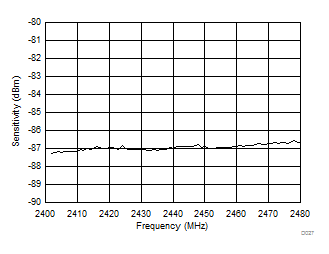
vs Frequency 2402 MHz to 2480 MHz
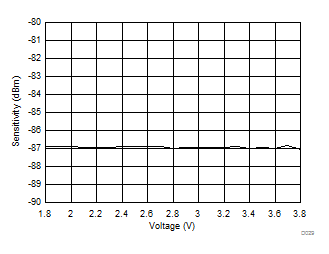
vs Voltage, 2440 MHz
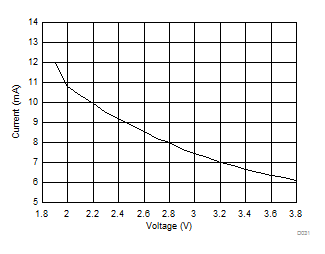
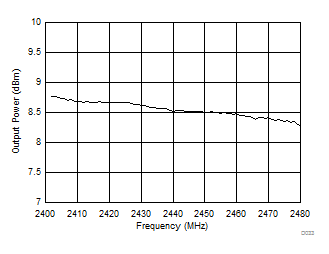
2402 MHz to 2480 MHz
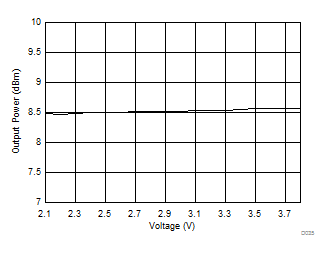
vs VDDS, 2440 MHz
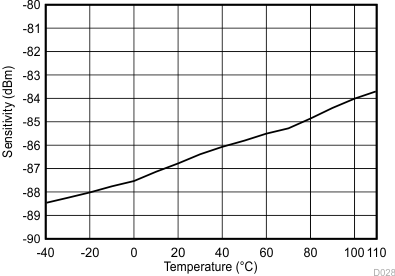
vs Temperature 2440 MHz
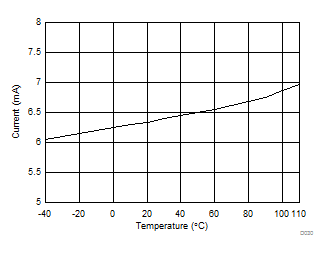
vs Temperature at 2440 MHz
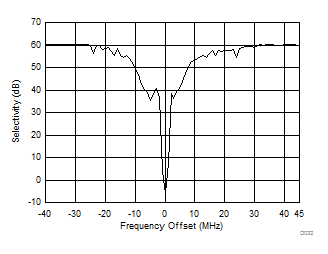
vs Frequency Offset
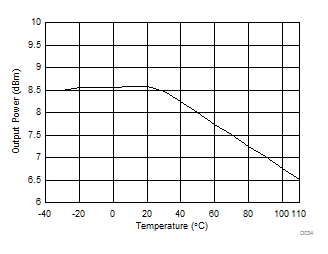
vs Temperature, 2440 MHz